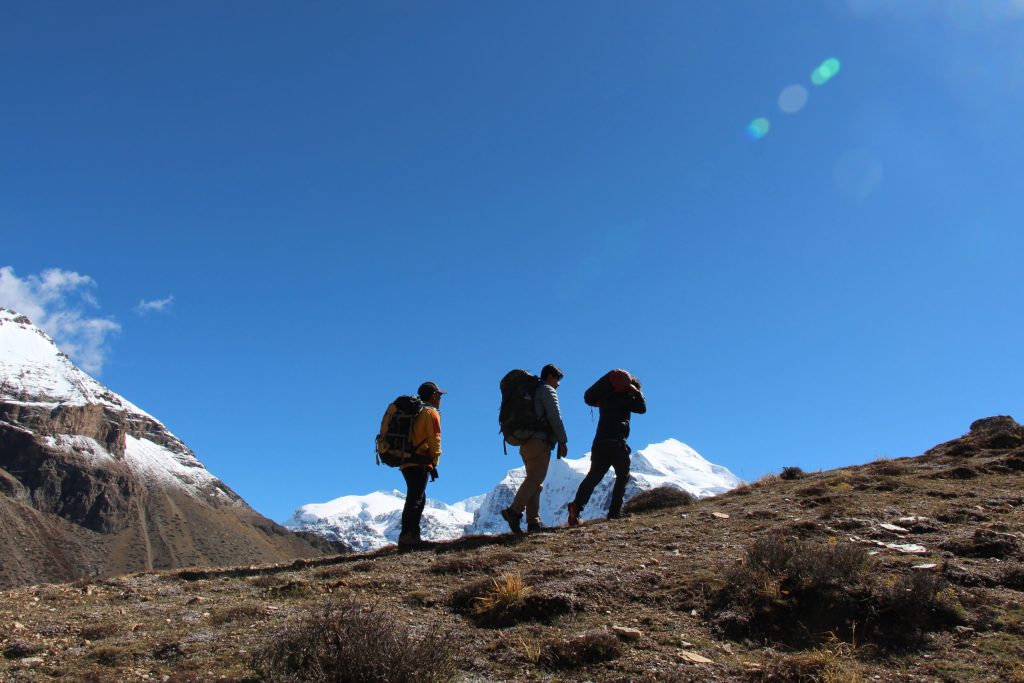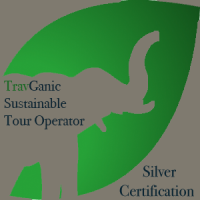Three of Nepal’s must-try hiking trails

Three of Nepal’s must-try hiking trails According to one American study, over 50% of people cited their top reason for wanting to travel as learning something new about a place, history or culture. So, what better way to tick those boxes than by integrating with the locals on one of Nepal’s many beautiful trekking trails? Arguably most famed for its imposing mountain ranges, Nepal is a global hiking hotspot. With eight of the world’s ten highest mountains situated in this landlocked South Asian nation, there’s no wonder that Nepal has gained such a positive reputation amongst the hiking community. If you’re a novice in hiking, don’t let Nepal’s perilous peaks put you off from visiting the country. There are plenty of routes further off the beaten track which can invoke a similarly awe-inspiring reaction as the more gruelling ones throughout the Himalayas’ hotspots. So take a look at three of Nepal’s lesser-known trails – they should certainly feature on your hiking bucket list. Panchase trek The Panchase trek is the perfect option for the more inexperienced hiker looking to get an authentic feel for Nepal’s culture and lifestyle. This relatively easy 26-mile trek takes around three to four days to complete and passes through traditional Nepali villages, where conveniently situated tea houses can provide some welcome respite. You will also explore the protected forests of Panchase, which contain over 100 species of orchids, so keep an eye out for the beautiful flora in this area. Experts suggest that the Panchase Trek suits every travelling party, from families with young children to elderly hikers. Whilst other trekking options will take you to far higher altitudes, the views from the summit of Panchase Hill are genuinely spectacular, offering panoramas of the snowy Himalayan peaks. Upper Dolpo trek Situated in one of the most remote regions in Nepal, the Upper Dolpo trek is rarely attempted by tourists. This is due to the cost and difficulty attached to getting to the region, but once there, it is widely believed to be one of the country’s most beautiful hiking trails. Due to a series of steep ascents and a lack of tourist infrastructure. The challenging trail is only made more difficult by the lack of accommodation, meaning any walkers will likely need to camp for the duration of the expedition. Highlights include views over the spectacular turquoise water of Phoksundo Lake, which will be seen relatively early on in your journey. Another factor making Upper Dolpo unique is the opportunity to spot snow leopards in Shey Phoksundo National Park – one of Nepal’s eight suggested snow leopards. Kanchenjunga trek When you think of the tallest mountains in the world, you will likely think of names like Everest and K2. But did you know that Kanchenjunga in the Himalayas comes in as the world’s third-tallest peak? Being in such proximity to Everest, this 8,586m-high mountain can often be overlooked by tourists. Still, the less frequently trodden Kanchenjunga Circuit offers all the ingredients for a memorable hiking experience. This lengthy walk will test but truly reward any visiting hikers, from stunning vistas to a glaciated base camp on the mountain. The trail stretches 220km and will take approximately 21 days to complete. As a result, it is recommended that any visitors looking to take on this particular hike have a decent fitness level. In addition, this route will be particularly appealing to nature lovers, as the changing landscapes attract a vast range of flora and fauna for you to appreciate on your travels. You can have a tailor-made adventure in this region By Geoff Aldis, Freelance Content producer and Researcher
What you need to know about high altitude sickness.

Trekking in the Himalayas is a favourite bucket-list item for adventure lovers worldwide. Sadly, such trips have turned deadly in the past due to ill-preparedness and recklessness when trekkers have died of altitude sickness. Altitude sickness strikes you if you are ill-prepared, and it doesn’t matter if you are trekking on your own or have booked a trekking package with a tour operator. We’ve all heard of altitude sickness—but how often does it turn deadly? Here’s what everyone is travelling to high elevations to know. What is altitude sickness? Rapid Ascend Altitude sickness is also known as acute mountain sickness (AMS). People ascend rapidly without giving their bodies enough time to get used to the reduced amount of oxygen in the higher elevation. Our bodies are equipped differently to adjust to make this adjustment, but it takes more time than others. AMS’s mild signs and symptoms are headache and nausea; fortunately, for most sensible people going to high altitude in a controlled ascent, this is as bad as it gets. It will progress further if a person keeps going to a higher elevation. It can lead to dizziness, difficulty breathing even while resting, vomiting, ataxia, fluid accumulating in the lungs (HAPE), and swelling around the brain (HACE) – all of which can be fatal if not treated as soon as possible. Young, fit people—are at higher risk. The individuals usually struck by altitude sickness are those who fly in from the lowlands and continue climbing higher without stopping to allow the body to acclimate to the altitude. The recommended guideline is not to go above 300 meters above 3500 meters in elevation and stop for an acclimatization day every 1000 meters. It’s common to have a headache and not feel great for the first few days you’re in altitude. Luckily, those symptoms usually pass after a rest day for acclimatization. One reason young, fit people may be at risk for more complications is because they may continue to push themselves. It doesn’t matter if you come in last in your group. It will help if you enjoy the scenery and environment you are in and do not suffer. If you have these symptoms and you continue to ascend, things are only going to get worse. Climb high, sleep low No matter how tired you are, a good practice would be to rest for some moments when you get to your camp/lodge, walk to a higher point, and come down. By doing this, your body gets less oxygen at the higher point, so when you come down to your stop for the night, your body will notice more oxygen no matter how slight the difference is – it makes a difference. Altitude affects everyone differently. People who live at higher elevations are less likely to get altitude sickness during hiking in the mountains than those who live at sea level. Even two people living in the same place could react differently to a higher altitude. Some people are more sensitive to high altitudes than others. Of course, it doesn’t help if you come from a tropical country at sea level. Dehydration and heat exhaustion has similar symptoms to AMS. To avoid confusion, cover yourself adequately with a hat, and full sleeve shirt, apply sunblock and lip balm of factor 30 at least, drink plenty of fluid, and take your time, do not rush. Make sure the colour of your urine is pale/clear. If it is yellow, you need to rehydrate. Making sudden movements can cause a spell of dizziness above 3500 meters. When symptoms strike, head for lower ground. Everyone should remember that if you have a headache, do not take it higher. Lookout for loss of balance (ataxia) or lack of coordination on simple tasks like walking in a straight line or tying up shoelaces. These symptoms are similar to when someone is suffering from hypothermia. Ensure the patient is warmly dressed and has a woollen or fleece hat. These simple tests can differentiate between a mild annoying mountain sickness or the beginning of something more serious such as cerebral oedema (brain swelling). There is medicine to treat acute mountain sickness, but the best treatment for any altitude-related condition is to Descend, Descend, Descend! You will be amazed at how quickly the affected person starts feeling once you have descended 300 meters but try to bring the patient lower by about 500 meters. The increased atmospheric pressure and improved delivery make a world of difference. Are you planning a trekking vacation? Take time to acclimate—and check with your doctor. If you plan to do a rigorous trek above 3500 meters, you need to consider taking a few days to adapt to the trek’s starting elevation before proceeding to a higher altitude. These days with the internet, you can always compare several itineraries for your trekking holiday, and you will soon find a pattern of the programs and stick to it as a guideline. Drink plenty of water, 3-4 litres daily, to prevent dehydration, so you know your headache could be due to AMS and not dehydration. It is also a good idea to visit your doctor – preferably someone familiar with high altitude- before you go on your trekking holiday to evaluate your health properly. Doing some training to improve your fitness is always helpful. Remember to take it slow and steady prevention is better than cure. Safe Trekking!
















